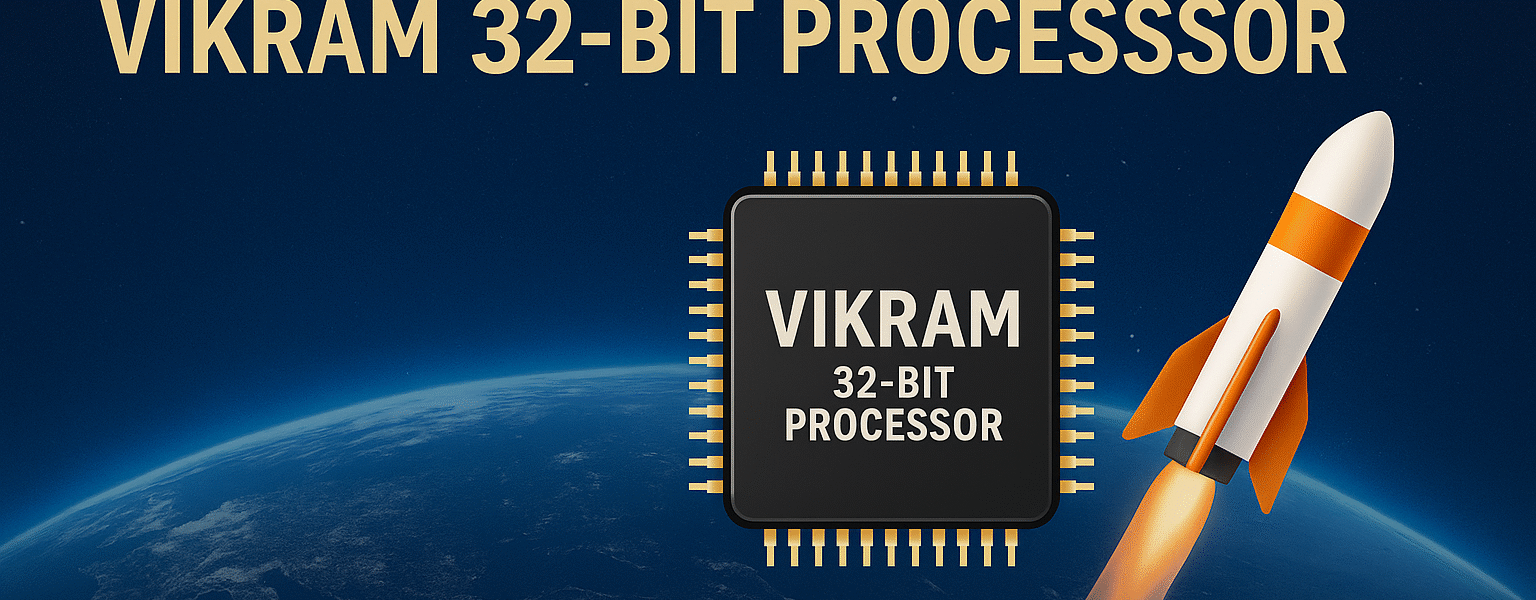PM Modi Unveils Vikram 32-bit Processor: India’s First Indigenous Space-Grade Semiconductor Chip
Prime Minister Narendra Modi today unveiled the Vikram 32-bit Processor (VIKRAM3201), India’s first fully indigenous semiconductor chip designed for space missions. Developed by ISRO’s Semiconductor Laboratory (SCL) in Mohali, Punjab, this breakthrough marks a defining milestone in India’s quest for semiconductor self-reliance and reinforces its ambitions to become a global space-technology hub.
🌌 What is the Vikram 32-bit Processor?

The Vikram 32-bit processor is a 32-bit space-grade microprocessor purpose-built for the hostile environment of outer space, where extreme heat, radiation, and mechanical stress challenge conventional chips.
It was designed at ISRO’s Vikram Sarabhai Space Centre (VSSC) and fabricated in SCL Mohali using 180nm CMOS technology. This represents a significant leap from the earlier VIKRAM1601 16-bit processor that had been powering India’s space systems since 2009.
⚙️ Key Features of Vikram 32-bit Processor at a Glance
- 32-bit architecture: Enables handling of complex datasets and advanced mission tasks.
- Floating-point support: Essential for precise scientific calculations, navigation, and control.
- Extreme reliability: Operates between –55°C to +125°C, radiation-hardened for space.
- On-chip 1553B bus: Ensures robust avionics communication inside rockets and satellites.
- Safety-critical software: Compatible with Ada programming for mission-critical applications.
- Indigenous toolchain: Compiler, assembler, linker, and simulator developed in-house by ISRO.
The chip had its first successful test flight on PSLV-C60 (March 2025), validating its reliability in live mission scenarios.
🔬 How Does Vikram Compare Globally?
While not competing with consumer processors (Intel, Apple, Qualcomm), Vikram-32 belongs to the elite class of space-grade processors like NASA’s RAD750 or ESA’s LEON.
- Process node: Built on 180nm CMOS, a mature but proven technology where reliability > speed.
- Specialisation: Designed for deterministic performance under cosmic radiation, not consumer-level GHz races.
- Strategic impact: Ends India’s reliance on imported chips for rockets and satellites, securing both technological sovereignty and national security.
🚀 Future Prospects Beyond Space
ISRO envisions wider applications of the Vikram processor in:
- Defence systems (missile guidance, radar)
- Automotive safety (ADAS and autonomous control systems)
- Energy & nuclear plants (radiation-tolerant control units)
- Aerospace & aviation (aircraft avionics, drones)
At Semicon India 2025, PM Modi emphasised that Vikram marks the dawn of India’s Atmanirbhar Bharat in semiconductors, calling the achievement a stepping stone to a complete chip design-to-fabrication ecosystem.
🔑 Key Takeaway
The Vikram 32-bit Processor is not just a chip; it is a strategic asset, a symbol of national innovation, and a watershed moment for India’s space program and semiconductor ambitions. By joining the ranks of nations capable of building space-grade processors from scratch, India cements its place as a rising semiconductor power and a self-reliant space-faring nation.
Discover more from
Subscribe to get the latest posts sent to your email.










2 COMMENTS